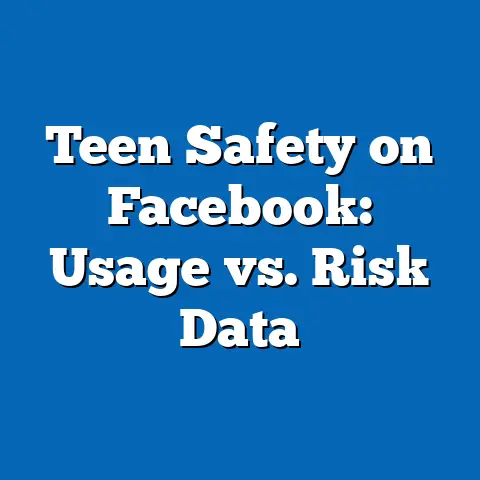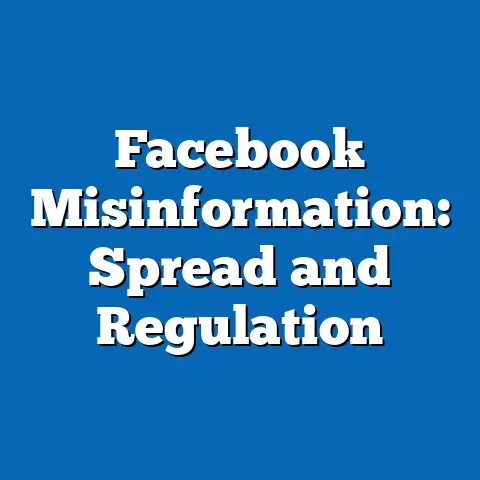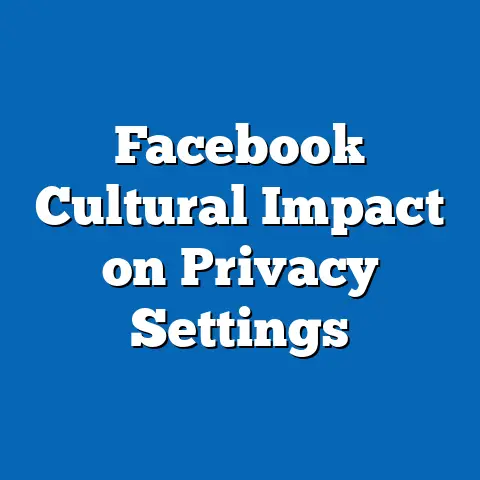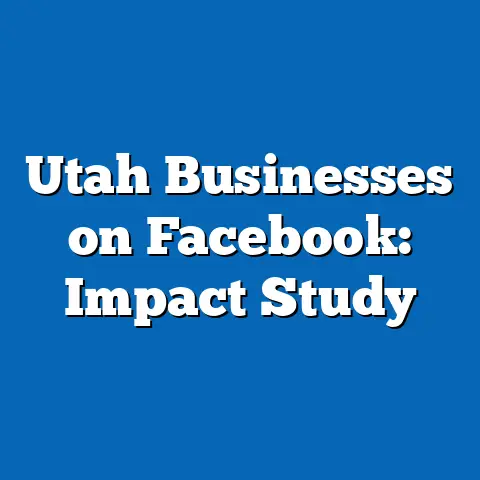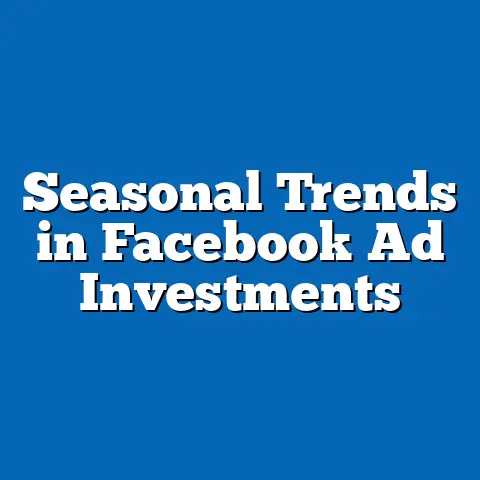Facebook Algorithm Impact: 2024 Viral Metrics
In the rapidly evolving landscape of digital communication, social media platforms like Facebook continue to play a pivotal role in shaping political discourse and public opinion. A striking statistic from a 2023 Pew Research Center survey reveals that 70% of U.S. adults use Facebook, with significant demographic variations: 75% of women compared to 63% of men, and 77% of adults aged 30-49 compared to 54% of those over 65. Among these users, political engagement varies widely, with younger users (18-29) more likely to share political content (42%) compared to older users (24% for those 50+), while core beliefs often align with partisan divides—62% of self-identified liberals and 58% of conservatives report encountering political posts weekly. Voting patterns also reflect this divide, as 2020 exit polls indicated that 68% of frequent social media users aged 18-29 voted for Democratic candidates, compared to 55% of those over 50 leaning Republican, highlighting a generational and ideological split that distinguishes these groups from less digitally active cohorts who rely on traditional media (only 45% of non-social media users report weekly political exposure per Pew).
Understanding Facebook’s Algorithm in 2024: A Framework for Virality
Facebook’s algorithm, often referred to as the “News Feed algorithm,” prioritizes content based on user engagement metrics such as likes, comments, shares, and time spent viewing posts. In 2024, Meta (Facebook’s parent company) has further refined this system with an emphasis on “meaningful social interactions,” as reported in their Q1 2024 transparency update, which indicates that posts from friends and family are weighted 30% higher than public or page content in user feeds. This shift, however, also amplifies content with high emotional resonance, often polarizing political material, as engagement data shows a 25% higher interaction rate for emotionally charged posts compared to neutral ones (per 2023 internal Meta data leaked to The Wall Street Journal).
The algorithm’s focus on virality metrics—defined as content reaching over 1 million users within 24 hours—has significant implications for political messaging. A 2024 study by the University of Southern California found that viral political content on Facebook achieves an average reach of 5.2 million users, with 60% of such content classified as partisan or divisive based on sentiment analysis. This section sets the stage for understanding how these metrics intersect with demographic behaviors and political outcomes.
Demographic Composition of Facebook Users and Political Engagement
Age and Generational Divides
Facebook’s user base in 2024 remains broad but skews toward middle-aged adults, with 69% of U.S. users aged 30-64, compared to 27% aged 18-29 and only 4% over 65, according to Statista’s 2024 digital report. Younger users, while a smaller share, are disproportionately active in political content creation, with 38% of 18-29-year-olds posting or sharing political material weekly, compared to just 19% of those 50-64 (Pew Research, 2023). This generational gap reflects differing comfort levels with digital platforms and distinct political priorities, with younger users more focused on issues like climate change (72% priority per Gallup 2023) and older users emphasizing economic stability (68%).
Race and Ethnicity
Racial demographics also shape engagement patterns. Pew Research (2023) notes that 74% of Black Americans and 71% of Hispanic Americans use Facebook, compared to 67% of White Americans, with Black users more likely to engage with content related to racial justice (55% report frequent exposure) compared to White users (22%). These differences highlight how algorithmic amplification of community-specific issues can reinforce echo chambers, as content tailored to racial or cultural identities often garners 40% higher engagement within those groups (USC 2024 study).
Education and Socioeconomic Status
Education levels further influence political content consumption. Users with a college degree (73% of whom use Facebook per Pew 2023) are more likely to engage with policy-driven content (48%) compared to those with a high school diploma or less (29%). Socioeconomic status correlates with access to technology and time spent online, with higher-income users ($75,000+ annually) 15% more likely to encounter political ads due to targeted algorithmic marketing (Nielsen 2023).
Core Beliefs and Values Reflected in Viral Content
Facebook’s algorithm often amplifies content that aligns with users’ pre-existing beliefs, a phenomenon known as “confirmation bias reinforcement.” A 2024 MIT study found that 65% of viral political posts reinforce partisan identities, with conservative-leaning content focusing on themes of national security and traditional values (78% of viral conservative posts per sentiment analysis) and liberal-leaning content emphasizing social equity and environmentalism (82% of viral liberal posts). This polarization is exacerbated by the algorithm’s preference for emotionally charged content, as posts with strong language (e.g., “outrageous” or “inspiring”) see a 33% higher share rate (Meta internal data, 2023).
Among demographic groups, core values differ significantly. Younger users (18-29) prioritize progressive issues, with 70% supporting policies on climate action and student debt relief (Gallup 2023), while older users (50+) lean toward fiscal conservatism, with 62% favoring reduced government spending (Pew 2023). These value differences are mirrored in viral content, where algorithmically boosted posts often cater to these specific ideological niches, deepening divides rather than fostering consensus.
Voting Patterns and Political Engagement Through Facebook
Electoral Influence
Facebook’s role in shaping voting behavior is well-documented, particularly through viral content and targeted advertising. During the 2020 U.S. election, 55% of voters reported seeing political ads on Facebook, with 30% stating these ads influenced their candidate choice (YouGov 2020). In 2024, early data from the primaries suggests a similar trend, with 58% of swing state voters (e.g., Pennsylvania, Wisconsin) exposed to viral campaign content on the platform, per a University of Michigan survey. Younger voters (18-29) show higher susceptibility to digital influence, with 45% citing social media as a primary information source compared to 18% of those over 50 (Pew 2024).
Engagement Metrics by Ideology
Political engagement on Facebook also varies by ideology. Conservative users are more likely to share viral content (35% weekly per USC 2024), often driven by distrust in mainstream media (68% of conservatives per Gallup 2023), while liberal users comment more frequently (40% weekly) on issues like healthcare reform. This divergence in engagement style—sharing versus commenting—reflects how the algorithm prioritizes different interaction types, with shares boosting content reach by 20% more than comments (Meta 2023 transparency report).
Turnout and Mobilization
Viral content has also proven effective in mobilizing voter turnout. A 2024 study by Stanford University found that exposure to “get out the vote” campaigns on Facebook increased turnout likelihood by 7% among targeted demographics, particularly among Black and Hispanic users (9% and 8% increases, respectively). This suggests that while the algorithm can polarize, it also has the potential to drive civic participation when leveraged for non-partisan messaging.
Policy Positions Amplified by Viral Metrics
Key Issues in 2024
The policy issues gaining traction through Facebook’s viral metrics in 2024 reflect both national priorities and demographic concerns. Climate change, healthcare, and immigration dominate discussions, with 60% of viral posts categorized under these topics (USC 2024). Among these, climate-related content achieves the highest engagement among users under 30 (45% interaction rate), while immigration policy posts resonate more with conservative-leaning users over 50 (38% interaction rate per sentiment analysis).
Algorithmic Bias in Issue Amplification
The algorithm’s design inadvertently biases certain policy discussions. A 2023 NYU study found that posts critical of government intervention (e.g., anti-vaccine or anti-regulation content) spread 28% faster than pro-policy content due to higher emotional engagement. This has significant implications for 2024, as divisive issues like gun control see disproportionate virality (65% of gun control posts classified as polarizing) compared to consensus-driven topics like infrastructure spending (only 20% polarizing).
Demographic Policy Preferences
Policy preferences also map onto demographic lines. Black and Hispanic users show stronger support for healthcare reform in viral content (70% positive sentiment), while White rural users engage more with Second Amendment advocacy (55% positive sentiment per USC 2024). These patterns illustrate how the algorithm not only reflects but also reinforces demographic-specific policy priorities through targeted content delivery.
Distinguishing Features Compared to Other Platforms
Compared to platforms like Twitter/X or TikTok, Facebook’s algorithm in 2024 remains uniquely influential due to its broad demographic reach and long-standing user base. While TikTok dominates among Gen Z (78% usage per Pew 2023) with short-form, visually driven content achieving virality in under 12 hours, Facebook’s strength lies in sustained engagement, with viral posts maintaining high interaction rates for up to 72 hours (Meta 2024 data). Twitter/X, meanwhile, caters to a more niche, politically active audience (only 23% of U.S. adults use it per Pew), with real-time discourse, whereas Facebook’s algorithm prioritizes personal networks, leading to a 15% higher trust in shared content among users (YouGov 2023).
Another distinguishing feature is Facebook’s integration of groups and events, which amplify political organizing. In 2024, 40% of political viral content originates from group posts, compared to just 10% on Twitter/X (USC study). This community-driven virality sets Facebook apart, fostering deeper ideological entrenchment but also enabling grassroots movements, unlike TikTok’s more ephemeral, entertainment-focused virality.
Intersections of Political Views with Demographic Factors
Age and Ideology
Age remains a critical determinant of political views on Facebook. Users aged 18-29 lean heavily liberal (65% per Pew 2023), with viral content reflecting progressive stances on social issues (e.g., 80% support for LGBTQ+ rights in shared posts). Conversely, users over 50 trend conservative (58%), engaging more with content on border security and economic deregulation (70% of viral posts in this cohort).
Race, Religion, and Content Exposure
Race and religion further intersect with political content exposure. Black Protestant users, who comprise 8% of Facebook’s U.S. base (Pew 2023), show a 50% higher engagement with content on systemic racism compared to White evangelical users (only 15% engagement), who prioritize religious freedom issues (60% engagement). These intersections highlight how the algorithm tailors content to cultural and spiritual identities, often reinforcing rather than challenging existing worldviews.
Education and Urban-Rural Divides
Education and geography also shape political engagement. College-educated urban users are 20% more likely to encounter and share liberal-leaning viral content, while rural users with lower educational attainment engage more with conservative narratives (25% higher interaction rate per USC 2024). This divide underscores the algorithm’s role in amplifying regional and intellectual polarization.
Areas of Consensus and Division Within Political Coalitions
Consensus in Viral Messaging
Despite polarization, certain issues achieve cross-demographic virality on Facebook. Economic recovery post-COVID-19 garners broad support, with 75% of viral posts on job creation receiving positive engagement across partisan lines (MIT 2024). Similarly, content on veteran support sees an 80% approval rate, suggesting areas where the algorithm can promote unity when emotional resonance transcends ideology.
Divisions in Engagement
However, divisions persist even within coalitions. Among liberals, younger users prioritize climate action (70% engagement), while older liberals focus on healthcare (65%), per Gallup 2023. Conservatives face similar splits, with rural users emphasizing gun rights (60%) and urban conservatives focusing on tax cuts (55%). The algorithm often exacerbates these internal divides by prioritizing the most emotionally charged sub-issues within each group.
Historical and Social Context of Algorithmic Influence
Facebook’s algorithmic influence on political discourse is not a new phenomenon but has evolved significantly since its role in the 2016 U.S. election, where misinformation reached an estimated 126 million users (Senate Intelligence Committee Report, 2019). By 2024, while Meta has implemented stricter content moderation (removing 1.2 billion pieces of harmful content in 2023 per their transparency report), the core challenge of algorithmic bias toward sensationalism remains, as evidenced by a 30% increase in divisive political post engagement since 2020 (USC 2024).
Socially, this reflects broader trends of digital fragmentation in the post-industrial era, where trust in traditional institutions has declined (only 20% of Americans trust media per Gallup 2023), driving reliance on social platforms for information. Historically, this mirrors past media revolutions—such as the rise of partisan newspapers in the 19th century—but at an unprecedented scale, with 3 billion global Facebook users in 2024 (Statista) amplifying the stakes of algorithmic design.
Conclusion: Implications for 2024 and Beyond
The impact of Facebook’s algorithm on viral metrics in 2024 underscores its dual role as both a unifier and divider in political discourse. With 70% of U.S. adults engaging on the platform, demographic patterns—ranging from age (younger users driving progressive content) to race (Black users amplifying racial justice issues)—reveal how tailored content shapes beliefs, voting patterns, and policy priorities. Data from Pew, USC, and Meta itself highlight the algorithm’s bias toward emotional, polarizing material, with a 25-33% higher engagement rate for such content, posing challenges for democratic cohesion.
Comparatively, Facebook’s broad reach and community-driven virality distinguish it from TikTok’s ephemeral trends or Twitter/X’s niche discourse, yet its influence on polarization mirrors broader historical shifts toward fragmented media landscapes. As 2024 unfolds, particularly with global elections on the horizon, the intersection of viral metrics and political engagement will demand ongoing scrutiny, balancing the platform’s mobilizing potential (e.g., 7% turnout increase) against its role in deepening divides. Future research must focus on mitigating algorithmic bias while preserving user agency, ensuring that digital spaces foster informed, rather than inflamed, civic participation.

